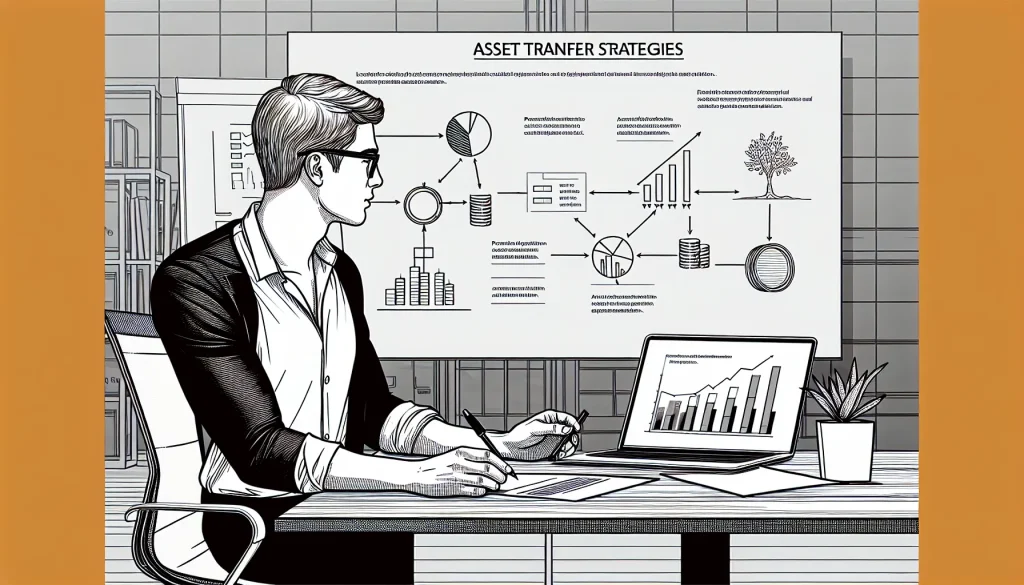How to Transfer Personal Assets to LLC: A Simple Guide for Business Owners

Transferring personal assets to a Limited Liability Company (LLC) can be a smart move for entrepreneurs and business owners looking to protect their investments. By shifting ownership of valuable assets like real estate, equipment, or intellectual property, individuals can enjoy liability protection and potential tax benefits. But the process can seem daunting without the right guidance.
Understanding the steps involved in this transfer is crucial. It’s not just about paperwork; it requires careful planning to ensure compliance with legal requirements and to avoid potential pitfalls. Whether it’s determining the asset’s value or navigating tax implications, knowing what to expect can make the transition smoother. This article will break down the essential steps to help individuals confidently transfer their personal assets to an LLC.
Understanding LLCs and Asset Transfer
Transferring personal assets to a Limited Liability Company (LLC) involves clear steps. Knowing the structure and benefits of an LLC makes the process easier.
What Is an LLC?
An LLC, or Limited Liability Company, is a business structure that protects its owners’ personal assets from business debts. This structure combines features of both corporations and partnerships. LLCs provide flexibility in management and taxation, allowing for different members to share profits and responsibilities.
Benefits of Forming an LLC
Forming an LLC offers several benefits. It limits personal liability, meaning owners are typically not responsible for the company’s debts. This protection guards personal assets like cars and homes. LLCs also enjoy pass-through taxation, which allows profits to be taxed only once on personal tax returns. Additionally, LLCs can enhance credibility with clients and suppliers. They signal a serious commitment to business.
Preparing for the Transfer
Preparing for the transfer of personal assets to an LLC involves a few critical steps. Proper planning ensures the process runs smoothly without any legal issues.
Evaluating Your Personal Assets
Evaluating personal assets includes assessing all items of value that an individual owns. This might include real estate, vehicles, equipment, and bank accounts. It’s important to make a comprehensive list of these assets. Knowing what assets to transfer helps in developing a clearer picture of what the LLC will own. Owners might also want to consider the liability risk associated with each asset. Higher-risk items may benefit more from the protection of an LLC structure.
Determining Fair Market Value
Determining the fair market value of each asset represents an important step in the transfer process. Fair market value refers to the price a willing buyer would pay to a willing seller in an open market. To establish this value, individuals can research recent sales of similar items or use professional appraisals. Accurate valuations are essential for tax purposes and legal documentation. When transferring assets, proper documentation helps avoid disputes and ensures compliance with regulations.
Steps to Transfer Personal Assets to LLC
Transferring personal assets to an LLC involves specific steps to ensure a smooth process. Following these guidelines helps maintain legal compliance and protects ownership.
Drafting an Asset Transfer Agreement
Creating an asset transfer agreement is crucial in this process. This document outlines the details of the transfer, specifying the assets being moved from personal ownership to the LLC. The agreement includes descriptions of each asset, their fair market values, and the terms of the transfer. It’s important to clearly state that the transfer is voluntary and that both parties understand the implications. Engage a qualified attorney to review the agreement, ensuring it meets legal standards and protects both the individual and the LLC.
Executing the Transfer
Executing the transfer requires following a few important steps. First, ensure that all personal assets are correctly listed in the asset transfer agreement. Next, the owner should sign the agreement, officially transferring ownership to the LLC. Depending on the type of asset, additional requirements may apply. For real estate, updating the title to reflect the LLC as the new owner is essential. For vehicles, a transfer of title must occur with the Department of Motor Vehicles. Finally, file any necessary tax documents to reflect the transfer and maintain clear records for future reference.
Legal and Tax Considerations
Transferring personal assets to an LLC involves several legal and tax aspects that require attention. These considerations ensure compliance and proper handling of asset ownership.
Tax Implications of Transferring Assets
Transferring personal assets may trigger tax events. The IRS treats transfers of appreciated assets as sales, potentially leading to capital gains tax. Owners should assess the fair market value of assets before the transfer, as this value determines tax liabilities. For example, if a property worth $200,000 is transferred and initially purchased for $150,000, the $50,000 gain could incur taxes. Additionally, transferring assets may affect deductions if the LLC operates differently than the owner’s previous arrangement. Consulting a tax professional enhances understanding of consequences and ensures correct filing.
Potential Legal Issues
Legal challenges may arise during the asset transfer process. First, ensure all paperwork is accurate and complete to avoid disputes later. An asset transfer agreement is vital, detailing the assets, values, and terms. Failing to document the transfer properly may lead to claims from creditors or other parties. Personal liability might also remain if assets are not appropriately documented or valued. Moreover, state laws may impose specific requirements on asset transfers to LLCs. Consulting with a qualified attorney assists in navigating these legal complexities and protecting personal interests.
Conclusion
Transferring personal assets to an LLC can significantly enhance an entrepreneur’s financial security and business credibility. By following the outlined steps and ensuring proper documentation owners can navigate the transfer process smoothly. It’s crucial to assess the fair market value of assets and consult with legal and tax professionals to mitigate potential risks. This proactive approach not only protects personal interests but also lays a strong foundation for a successful business venture. Embracing the benefits of an LLC can lead to a more secure and prosperous future for business owners.
Frequently Asked Questions
Why should I transfer personal assets to an LLC?
Transferring personal assets to an LLC offers liability protection, which safeguards your personal finances from business debts. Additionally, an LLC can provide potential tax benefits and enhance your professional credibility, making your business more attractive to clients and suppliers.
What steps are involved in transferring my assets to an LLC?
To transfer personal assets to an LLC, first, evaluate your assets and establish their fair market value. Next, create an asset transfer agreement detailing the assets and their values. Sign the agreement, update ownership titles, and file necessary tax documents to ensure compliance.
Is there a tax implication when transferring assets to an LLC?
Yes, transferring appreciated assets to an LLC can trigger capital gains tax. It’s essential to assess the fair market value of your assets beforehand to understand potential tax liabilities. Consulting a tax professional is advisable to navigate these implications effectively.
Should I consult a professional when transferring assets to an LLC?
Absolutely. Working with a qualified attorney and tax professional is recommended to ensure compliance with legal requirements and to navigate any potential tax consequences. Professional guidance can help protect your interests and simplify the transfer process.
What is an asset transfer agreement?
An asset transfer agreement is a legal document that outlines the specifics of the assets being transferred, their fair market values, and the terms of the transfer. This agreement ensures clarity and acts as a protective measure during the asset transition process.




